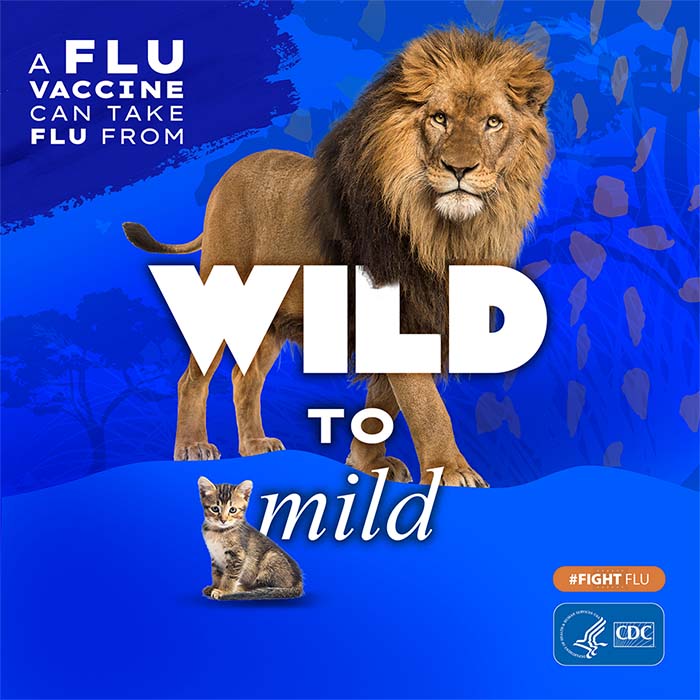Study Shows Hospitalization Rates and Risk of Death from Seasonal Flu Increase with Age Among People 65 Years and Older
June 12, 2019 — A new CDC co-authored study published in the journal Open Forum Infectious Diseases (OFID) reports that people 85 years and older are much more likely to be hospitalized and die from flu than adults 65 to 74 years old and confirmed that H3N2 flu viruses are particularly dangerous to older people. Researchers also found that the frequency of fever and several other typical symptoms of influenza decreased with age beyond 65 years, while the frequency of altered mental status increased with age. The OFID study adds to a growing body of evidence that supports the importance of vaccination in older adults and their contacts against influenza and Streptococcus pneumonia, and for the use of antiviral therapy as currently recommended by CDC.
While flu seasons can vary in severity, during most seasons, people 65 years and older bear the greatest burden of severe flu disease. Approximately 90% of influenza-related deaths and 50-70% of influenza-related hospitalizations occur among people in this age group. Because of their increased risk, older adults are a priority group for vaccination. However, adults aged 65 years and older include a large and diverse group of approximately 46 million people in the United States. The prevalence of chronic diseases changes as age increases beyond 65 years, as does frailty and functional status. By evaluating age related differences, researchers hope to better inform surveillance, prevention and treatment efforts for adults aged 65 years and older.
The study looked at age-related differences in influenza-associated hospitalization rates, clinical presentation of illness, and clinical outcomes among nearly 20,000 people older than 65 years who were hospitalized with laboratory-confirmed flu at 14 FluSurv-NET sites during the 2011-12 through 2014-15 influenza seasons, using 10-year age groups. Study results showed that:
- Hospitalization rates among adults aged 85 years and older were 2-6 times greater than rates for adults aged 65-74 years.
- The highest hospitalization rates occurred during H3N2 predominant seasons.
- Patients aged 85 years and older had an increased risk of developing pneumonia and in-hospital death or transfer to hospice compared to hospitalized patients aged 65-74 years.
- The frequency of fever and several other typical symptoms of influenza decreased in frequency with age beyond 65 years, underscoring importance of flu testing and clinical discretion in rapid treatment in older adults.
Newer high-dose and adjuvented influenza vaccines available for persons aged 65 years and older may provide additional protection among people in this age group. Flu vaccination has been shown to reduce flu illnesses and more serious flu outcomes including hospitalization or even death in older people.
Based on the findings from this study, CDC has begun presenting FluSurv-Net hospitalization data in finer age strata in older age groups (65-74 years, 75-84 years, 85 years and older) to better inform public health prevention and response efforts. FluSurv-Net is an influenza hospitalization surveillance network that covers approximately 9% of the U.S. population, or about 27 million people, to estimate the burden of flu hospitalizations in the United States. Public health epidemiologists should consider reporting and analyzing influenza surveillance data using additional age strata for older adults to demonstrate increasing vulnerability of the aging population and to identify opportunities to improve preventive care.
The study is available online from the Open Forum Infectious Diseases website.
